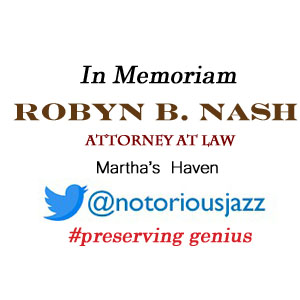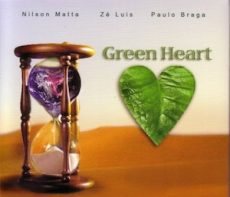
Daily Dose Of Jazz…
Ze Luis was born José Luis Segneri Oliveira was born December 17, 1957 in Rio de Janeiro, Brazil and as a child lived next to Antonio Carlos Jobim in the historic Ipanema neighborhood. Early on Oliveira began playing flute and he graduated from Pro-Art Conservatoire in flute and traditional harmony in 1975. Two years later he continued his studies in Performance Arts at Villa-Lobos Institute and soon after studied with renowned Brazilian saxophonist and clarinet player Paulo Moura.
The mid-70s saw him becoming heavily influenced by the album Native Dancer, a collaboration between Wayne Shorter and Milton Nascimento. He was also drawn to the music of Ian Anderson, leader and flutist of the British band Jethro Tull.
Zé’s first professional engagement began with Brazilian vocalists Ney Matogrosso and Luiz Melodia. Oliveira met pianist Tomás Improta while working with Brazilian actress and singer Zezé Motta, who at that time was working with emerging Caetano Veloso and recorded on his album and eventually joined Veloso’s newly formed band.
During this time Oliveira worked extensively with Gilberto Gil, The Wailers, Chico & Caetano on Globo TV and played with Chico Buarque, Rita Lee, Milton Nascimento, João Bosco, Elza Soares, and Mercedes Sosa.
He moved to New York City in 1990 and began studying with saxophonists Joe Lovano and Ted Nash at New York University. In 2004, Oliveira received his Masters in Composition and Arranging from the Juilliard School. His career includes multiple Grammy Award nominations.
Throughout the 1990s, Oliveira continued to record and perform with hundreds of artists from different genres, composed and performed for choreographer and dancer Patricia Hoffbauer and became a part of the New York Samba Band with Duduka da Fonseca, Romero Lubambo, Cyro Baptista and Nilson Matta.
Saxophonist and flutist Zé Luis Oliveira is the current producer of Just Play, a traveling improvisational music series and global storytelling project.
More Posts: bandleader,flute,history,instrumental,jazz,music,saxophone

Daily Dose Of Jazz…
Eduardo Puperi was born in Porto Alegre, Rio Grande do Sul, Brazil on October 25, 1969. From 1986 to 1991 he studied music at CLAM, a school directed by Zimbo Trio in São Paulo, Brazil with teachers Fernando Corrêa and Conrado Paulino. He graduated in composition and directing in 1993 from the University of Music and Arts Alcântara Machado (FAAM).
The next year Puperi formed the Ludi & Tiné Quartet with guitarrist Paulo Tiné. The instrumental group that lasted until 1999 and released an album called “Vento Leste” in 1997. He was musical director at Cultura Inglesa in São Paulo from 1996 to 2000, directing the musicals Guys and Dolls, Bye Bye Birdie, Hair, All that Jazz and Fame. From 1991 to 2004 he directed the big bands FAAM Jazz Band, Orquestralha and Swinging Sounds.
His groups have been Aura Tropical and the Edu Puperi Trio, the latter which became a quartet in 2005 with bassist Luis Passos, drummer Humberto Zigler, and tenor and soprano saxophonist and flutist Chiquinho de Almeida. Both groups have released albums.
In 2001 he began teaching piano, guitar and performing practice at Casa de Música Luiz Chaves. Pianist Edu Puperi continues teaching, performing and recording.
More Posts: bandleader,history,instrumental,jazz,music,piano
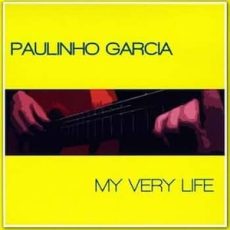
Daily Dose Of Jazz…
Paulinho Garcia was born on August 16, 1948 in Belo Horizonte, Minas Gerais, Brazil and began his musical career at the age of nine as a singer in a Sunday children’s program in the city’s principal radio station, Radio Inconfidencia. His teens saw him performing as a house musician in all musical programs of the Radio network, Guarany—TV Itacolomy.
He led his own band, Os Agitadores, and with them recorded his first two albums. Before his arrival in the United States in 1979, Paulinho composed, arranged, produced, and performed jingles for HP Studios. Four of his commercials received national awards.
After his move to Chicago, Illinois he performed and recorded two albums with the band Made in Brazil. In 1991 he founded his own band, Jazzmineiro, and their 1996 recording received excellent reviews in the Chicago Tribune, Jazziz magazine, the Brazilian Music Review, and The Brazilians.
Paulinho has been the recipient of numerous awards and accolades for his music and bands. He has toured Japan, Poland, Prague, Bratislava, Netherlands, Hong Kong, and Bangkok and performed at several jazz festivals and jazz cruises. With the addition of Polish singer Grazyna Auguscik, Two for Brazil with Greg Fishman became Three for Brazil.
Garcia released My Very Life to critics and audience praise and was nominated for a Grammy for Best Latin Jazz Recording among 25 of the best, and was nominated for the Brazilian International Press Award.
Guitarist and vocalist Paulinho Gatcia continues to perform, tour and record.
More Posts: bandleader,guitar,history,instrumental,jazz,music,vocal
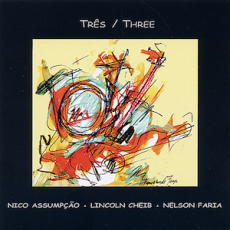
Daily Dose Of Jazz…
Nico Assumpção was born Antônio Álvaro Assumpção Neto on August 13, 1954 in São Paulo, Brazil. His father was a professional bass player, but he debuted in music by playing the acoustic guitar at the age of 10. He took classes with Paulinho Nogueira but changed to bass six years later to fill in the void in a schoolmate’s band.
At 16, he came to the United States to study harmony and orchestration at the University of California. Returning to Brazil he went to study at CLAM, with Brazilian bassists Luis Chaves and Amilton Godoy. In 1976 he again left Brazil and landed in New York City to study and perform on a deeper level. He played with among others Wayne Shorter, Pat Metheny, Sadao Watanabe, Larry Coryell, Fred Hersh, Larry Willis, Joe Diorio, John Hicks, Steve Slagle, Victor Lewis, Dom Salvador and Charlie Rouse.
While in the States he mastered various bass playing techniques, and became one of the pioneers of fretless and 6-string bass in Brazil when he came back in 1981. That same year he released the first bassist solo album in the country, titled Nico Assumpção. The following year he moved to Rio de Janeiro, Brazil where he lived for the rest of his life.
He was one of the most popular bassists in Brazil having played and/or recorded with Milton Nascimento, Caetano Veloso, Gilberto Gil, João Bosco, Maria Bethânia, Edu Lobo, César Camargo Mariano, Toninho Horta, Luiz Avellar, Wauke Wakabaiashi, Marco Pereira, Ricardo Silveira, Nelson Faria, Gal Costa, Hélio Delmiro, Maria Bethânia, Márcio Montarroyos, Raphael Rabello, Léo Gandelman and Victor Biglione, among others.
Bassist Nico Assumpção died from cancer on January 20, 2001 in Rio de Janeiro at age 47.
More Posts: bandleader,bass,history,instrumental,jazz,music
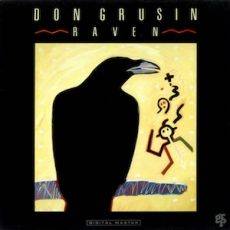
Daily Dose Of Jazz…
Donald Henri Grusin was born April 22, 1941 and grew up in Littleton, Colorado to a Latvian, classical violinist father. He graduated from the University of Colorado Boulder with a bachelor’s degree in sociology and a master’s degree in economics. In the early Seventies he was an economics professor in Guadalajara, Mexico but soon after he taught economics at Foothill College in California.
By the mid Seventies Grusin was touring with Pete Escovedo’s group Azteca alongside his daughter Sheila E in Bogota, Colombia. The trip sparked a lifelong interest in Latin music. In 1975, Quincy Jones invited him to tour with his band, and he left teaching for a career in music.
He worked as a studio musician on albums by Randy Crawford, Billy Eckstine, Joe Pass, and the Pointer Sisters. He formed the fusion group Friendship with Lee Ritenour, Ernie Watts, and Alex Acuña and recorded one album, then released solo albums in 1981 and 1983. By 1985 Don had produced the album Musician for Ernie Watts, winning a Grammy Award.
Grusin’s 2004 live album The Hang received a Grammy Award nomination, and he won Grammy Awards for his work on two albums by the Paul Winter Consort. He won an Echo Award for the album Quality Time, recorded with Peter Fessler.
As a record producer or keyboardist, Grusin has worked with Gerald Albright, Patti Austin, David Benoit, Larry Carlton, Oscar Castro-Neves, Dori Caymmi, Gilberto Gil, Jim Hall, Sérgio Mendes, Airto Moreira, Milton Nascimento, Flora Purim, Nelson Rangell, Brenda Russell, Zoot Sims, Leon Ware, and Sadao Watanabe.
Keyboardist, composer, and record producer Don Grusin, who is Dave Grusin’s younger brother, continues to push the boundaries of jazz and Latin jazz music.
More Posts: composer,history,instrumental,jazz,keyboards,music,record producer





